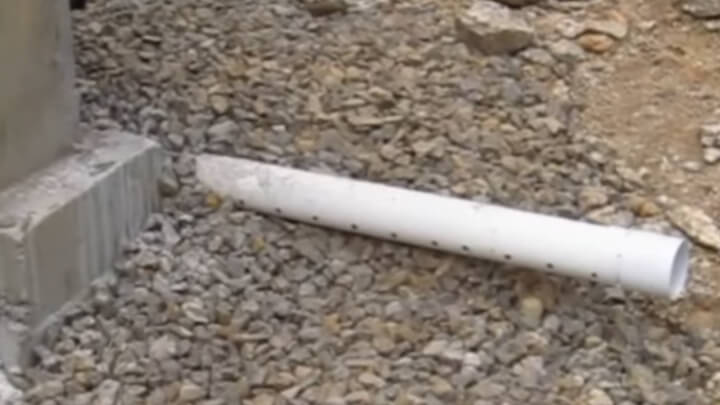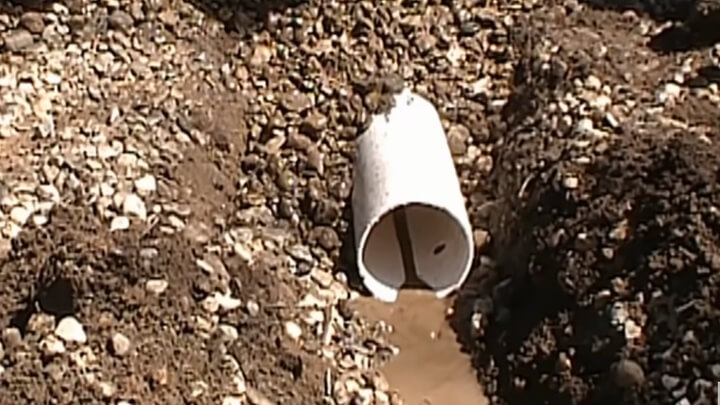Drain Tile vs French Drain vs Trench Drain: Which One is Right for You?
If you have drainage issues, you may have heard of drain tiles, French drains, and trench drains. Each of these drainage systems has its own unique features and benefits, making it important to understand the differences between them before deciding which one is right for you.
In this post, we will explore each type of drainage system and the factors you should consider when choosing the right one for your situation. From installation and cost to effectiveness and maintenance, we’ll cover everything you need to know to make an informed decision about which drainage system is best for your home.
Understanding Different Drainage Systems
Before deciding on which type of drainage system is right for you, it’s important to understand the difference between drain tile, French drain, and trench drain. All three systems have the same goal: to prevent water from pooling in or around your home, which can cause damage and create a breeding ground for mold and mildew.
- Drain tile, also known as perimeter drain, is a system of perforated pipes installed underground around the perimeter of your home. The pipes are placed in a bed of gravel and surrounded by filter fabric to prevent dirt and debris from clogging the pipes. As water enters the pipe, it is carried away from your home and discharged to a safe location.
- French drain, on the other hand, is a system of perforated pipes installed underground in a shallow trench filled with gravel. The trench is covered with filter fabric to prevent dirt and debris from clogging the pipes. Water enters the pipes and is carried away from the problem area.
- Trench drain, also known as a channel drain, is a system of long, narrow channels installed in areas where water tends to collect and pool, such as driveways, patios, and pool decks. The channels are covered with a grate to prevent debris from entering and clogging the drain. Water enters the channels and is carried away to a safe location.
What is drain tile?
Drain tile is a type of drainage system that is installed around the perimeter of a building’s foundation to prevent water from seeping into the basement or crawl space. It is also known as a footing drain or perimeter drain. Drain tile is typically made of perforated PVC piping that is laid in a trench and surrounded by gravel. The pipe is sloped downward away from the building, so water flows away from the foundation and into a drainage system or a sump pump.
The perforations in the pipe allow water to enter and be carried away, preventing it from accumulating around the foundation and causing damage. Drain tile is an effective solution for homes that are built on flat or low-lying properties that are prone to flooding or heavy rainfall.
With proper installation, it can provide reliable protection against water damage and help keep your home’s foundation dry and stable. However, it is important to note that drain tile installation requires excavation around the foundation, making it a more invasive and costly option compared to other types of drainage systems.
What is a French drain?
A French drain is a trench filled with gravel or rock that redirects water away from an area. It is commonly used to prevent water from accumulating in basements or crawl spaces. The trench is typically dug at a slope to facilitate water flow and can be lined with a filter fabric to prevent soil and debris from entering the drain.
French drains can be installed both inside and outside of a building, depending on the location of the water problem. Inside, a French drain can be installed in the basement or crawl space to prevent water from seeping in through the walls or floor. Outside, a French drain can be installed around the perimeter of the building to divert water away from the foundation.
One advantage of a French drain is that it can be installed without disrupting the landscaping or hardscaping around a home or building. It is also a relatively inexpensive option for managing water problems.
What is a trench drain?
Trench drains are another solution for water management on your property. They are similar to French drains in that they are designed to move water away from your property and prevent water damage, but they have some distinct differences.
Trench drains are typically wider and shallower than French drains, and they are commonly installed in hardscape areas like driveways, patios, and pool decks. They are designed to collect surface water runoff and channel it away from your property.
Trench drains are made up of a long, narrow channel that is covered by a grate or mesh. The grate or mesh allows water to flow into the channel while preventing debris like leaves, twigs, and trash from clogging the drain. The channel is sloped to ensure that water flows towards the outlet and away from your property.
Trench drains can be made from a variety of materials including plastic, fiberglass, and concrete. They come in various lengths and widths to accommodate different water flow rates and can be customized to fit the specific needs of your property.
When to use drain tile
Drain tiles are perforated pipes that are installed underground to channel water away from the foundation of a building. They work by collecting groundwater and directing it to a sump pump or a drainage ditch.

If you are experiencing water infiltration in your basement, crawl space, or yard, drain tile can be an effective solution. It is particularly useful in areas where the water table is high or in places with poor soil drainage.
In addition to preventing water damage to your property, drain tile can also help to alleviate the pressure on your foundation walls and prevent them from cracking or shifting over time.
Drain tile can be installed either inside or outside of your home, depending on the specific needs of your property. Interior drain tile is often installed when the basement is unfinished, while exterior drain tile is installed when the foundation is exposed during construction or renovation.
When to use a French drain
A French drain is a highly effective drainage solution that can be used in a variety of situations. Typically, a French drain is installed to redirect water away from a building or area that is prone to flooding or water damage. This can be especially useful in areas with heavy rainfall or where the soil is unable to absorb water effectively.
French drains work by utilizing a perforated pipe that is installed underground, surrounded by gravel or another porous material. This allows the water to be redirected away from the affected area and into a more suitable location, such as a drainage ditch or storm sewer.
French drains are often used in conjunction with other drainage solutions, such as sump pumps or catch basins, to provide a comprehensive and effective system for managing water flow. They are also commonly used in landscaping projects to prevent soil erosion and keep plants healthy.
When to use a trench drain
A trench drain, also known as a linear drain, is a type of drainage system that is designed to collect surface water and direct it away from an area. Trench drains are typically used in areas where there is a lot of runoff or standing water, such as parking lots, walkways, and driveways.
One of the key benefits of a trench drain is that it is a very effective way of managing surface water. The drain is typically installed flush with the surface of the area, which means that water can easily flow into it without being impeded by any obstacles or barriers. Once the water is collected in the drain, it is then directed away from the area through a pipe or channel.
Another advantage of a trench drain is that it is very durable and can withstand heavy traffic loads. This makes it ideal for commercial and industrial applications where there is a lot of foot or vehicle traffic.
However, trench drains are not always the best choice for every situation. If you have a sloped area that is prone to erosion, for example, a French drain may be a better option. French drains are designed to collect water from the soil and direct it away from the area, which can help to prevent erosion and other types of damage.
Benefits of using each type of drainage system
When it comes to drainage systems, each type has its own unique benefits. Let’s take a look at each one to determine which is right for you.
Drain tile systems are great for preventing water from seeping into your home’s foundation. They work by collecting water and directing it away from your home. These systems are ideal for areas with high water tables or where there is a lot of surface water.
French drains work by collecting water into a trench filled with gravel and a perforated pipe. The water is then directed away from your home and into a drainage area. French drains are ideal for areas with poor drainage and those prone to flooding.
Trench drains are typically used in commercial or industrial settings. They are designed to collect large volumes of water and are ideal for areas with heavy foot or vehicular traffic. Trench drains are perfect for areas like parking lots, driveways, and loading docks.
Misconceptions about drainage systems
There are many common misconceptions about drainage systems that can lead to confusion when it comes to choosing the right solution for your needs. Let’s take a look at some of the most common misconceptions:
- All drainage systems are the same: This is not true. There are different types of drainage systems available, and each one is designed to address specific issues. You need to understand your particular problem and choose the drainage system that is suitable for your needs.
- Drain tile and French drain are the same things: While both drain tile and French drain are used to alleviate water buildup, they are not the same thing. Drain tile is a system of perforated pipes laid in a bed of aggregate that redirects water away from your foundation. A French drain, on the other hand, is a trench filled with gravel that redirects water away from your foundation.
- Trench drain is only suitable for commercial applications: Trench drain is a popular choice for commercial applications, but it can also be used in residential settings. It’s a great option for diverting water away from your driveway or patio.
- Drainage systems are expensive: While some drainage systems can be costly, there are also affordable options available. The cost of your drainage system will depend on the type of system you choose, the size of the area that needs drainage, and the complexity of the installation.
How to decide which drainage system is right for your property
When it comes to choosing the right drainage system for your property it’s important to consider several factors. The first and most important factor is the severity of the drainage problem. If you have a severe water problem, a French drain or a drain tile system may be more appropriate. These systems are designed to handle larger volumes of water and they are more effective at preventing water buildup and damage to your property.
Location of the drainage system.
If you need to drain water from a specific area, such as a basement or crawl space, a drain tile system may be more appropriate. On the other hand, if you need to drain water from a larger area, such as a yard or driveway, a trench drain or French drain may be more appropriate.
Type of soil on your property.
If you have heavy clay soil that doesn’t absorb water well, a French drain or trench drain may be more effective. These systems are designed to channel water away from your property and prevent it from saturating the soil.
Cost and maintenance requirements.
Drain tile systems can be more expensive to install but require less maintenance. Trench drains and French drains are less expensive to install but may require more maintenance over time.
We hope this article has helped you to understand the differences between drain tile, French drain, and trench drain. Each of these drainage systems has its own unique advantages, and the right choice for your situation will depend on a variety of factors. We recommend that you consult with a professional to determine the best solution for your specific needs. Thank you for reading, and we wish you the best of luck in choosing the right system for your home or business.


